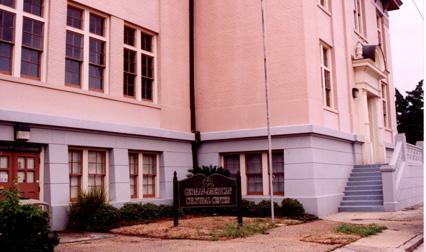German-Americans
German immigrants are among Louisiana's first families. Within four years of the founding of New Orleans (1718), German families, fleeing poverty in their homeland, boarded Louisiana-bound vessels in search of a better life. Believing the false promises of John Law's propagandists, their expectations were high, but they found even harsher conditions in the New World. So many died of pestilence during the journey that the boats became known as the "German Pest Ships," but a few hundred survivors eventually made their way to present-day St. Charles and St. John the Baptist parishes, collectively known as the German Coast (Côte des Allemands).
Paid by the Compagnie des Indes Company, these early German pioneers were given a small plot of land less than five acres to plant vegetables and grain to sell to the company and New Orleans and then somehow provide for themselves. The farmers met many hardships, from constant flooding, hurricanes, to rodent-infested fields and they received hardly any assistance from the Compagnie des Indes. After numerous complaints of the neglect of the company in providing resources, Compagnie des Indes in 1731 assigned larger tracts of land and ownership of slaves to the German settlements. Being fairly material poor, most German families could only afford to take in one-to-two slaves. By the end of the French rule though, census records indicate that there were roughly 535 slaves along the East Bank of the German Coast for 186 farms. With their increased labor force, German farmers were not only able to provide an excess of their grains and vegetables but began producing other supplies and cash crops, such as herbs, eggs, poultry, corn, rice, and indigo. Indeed, their farming endeavors allowed them to provide food not only for themselves but also extensively for New Orleans' residents. Some historians credit these farming endeavors with the early Crescent City's survival.
Many German Coast families eventually intermarried with Acadian families from the Acadian Coast immediately upstream. There were many similarities between the two groups, but the Acadians, being more numerous, eventually dominated the German population. There are however still visible vestiges of this historically important ethnic community, especially within its inhabitants.
 |
| German Heritage Sign |
Because many early German settlers traced their familial origins to Switzerland, they were commonly called Swiss-Germans. This distinction helped set them apart from the more numerous nineteenth-century German immigrants.
Nineteenth-century German immigrants came to Louisiana in three waves cresting in the 1850's.
- 1820's to 1850's
- 1840's to 1850's
- 1860's to 1890's
The first wave of immigration resulted from famine and economic dislocation following in the wake of the Napoleonic Wars. From 1820 to 1850, many of Louisiana's thousands of Germans immigrants were redemptioners, indentured servants. This group of peasants agreed to work on farms and plantations in order to support themselves.
The German immigrants of the mid-nineteenth century were quite different from their predecessors. Fleeing civil war in Germany, the mid-century immigrants were generally drawn from professional calico, and most settled in New Orleans. As physicians, engineers, lawyers, technicians, and other skilled professionals, these newcomers contributed greatly to the Crescent City's physical and cultural improvements of the late antebellum period. The German immigrants of the 1840's and '50's were responsible for the introduction of German music, architecture, numerous breweries, churches, and theaters, as well as the building of city streets and waterworks. 53,000 German immigrants arrived in New Orleans--the nation's second-leading antebellum port of entry--in 1853 alone. Many of the late antebellum German immigrants left Louisiana for other states, but by 1850, 25,000 Germans had made the Pelican State their adopted home.
The final wave of German immigrants was the largest. Composted primarily of industrial workers, this migration began in 1864, peaked in 1882, and declined dramatically by 1898. Almost three million German immigrants entered the United States during this period, and New Orleans was merely a way stop for most of the late nineteenth-century German immigrants.
 |
| German American Cultural Center |
A small group of the late nineteenth-century German immigrants settled in southwestern Louisiana, establishing the Fabacher and Robert's Cove communities in present-day Acadia Parish. The availability of cheap land and the coming of the railroad to the region attracted these pioneer families. After a shot period, the Fabacher settlers dispersed, but the Robert's Cove community persists to this day. Although many of the younger generation have intermarried and moved some distance from home, a distinct culture remains. St. Leo's Catholic Church, the religious parish of Robert's Cove, is credited with preserving traditions through the celebration of German religious holidays. The church serves as a common ground to all who return to remember ancestors.
by Diana C. Monteleone
Contributions by Rachel Blomquist
